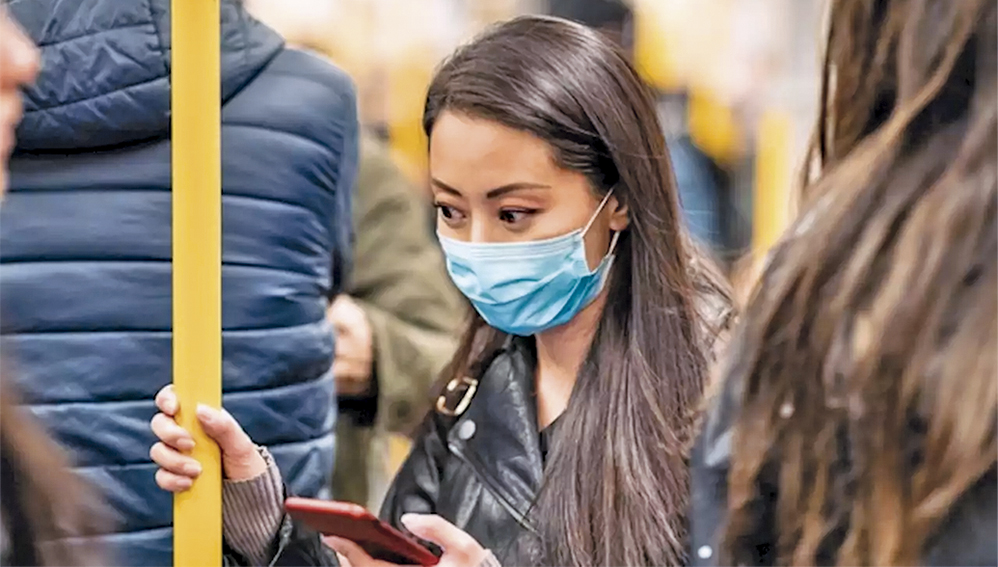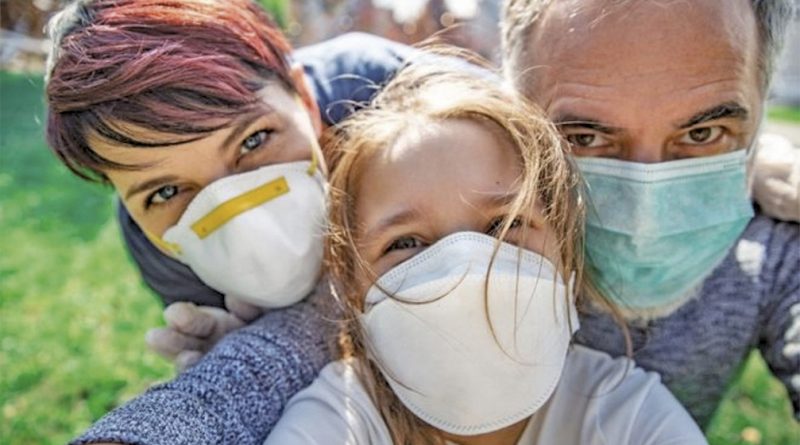Uso masivo de mascarillas puede “prevenir una segunda ola de covid-19” / Face mask use needed to ‘prevent COVID-19 second wave’
El mundo intenta reabrirse, pero la pandemia del coronavirus no da tregua.
En los últimos días, varios países que han tratado de volver a la normalidad tuvieron que retomar medidas restrictas ante el aumento de contagios.
En Pekín se cerraron seis grandes mercados, en India se registró un récord de casos diarios y en Estados Unidos seis estados reportaron que sus hospitales se estaban llenando rápidamente, según informó la agencia Reuters.
En la mayor parte de Europa parece que va bajando el ritmo de contagio, pero los expertos advierten que el fin del confinamiento puede llevar a nuevas restricciones.
“Aunque la situación esté mejorando en Europa, a nivel global está empeorando”, dijo el 12 de junio Tedros Adhanom Ghebreyesu, director general de la Organización Mundial de la Salud.
Ese es el caso de América Latina, que ahora es el epicentro de la pandemia. Al 12 de junio, en la región se registraban más de 1,5 millones de casos y más de 70.000 muertes.
En África también se está acelerando el contagio, según la OMS. A principios de junio el continente ya reportaba más de 200.000 infectados.
En total, en el mundo ya hay más de 7,5 millones de contagiados y más de 400.000 muertes.
No existe una vacuna ni una medicina efectiva contra el covid-19, entonces ¿qué hacer si tarde o temprano las personas deben salir de sus casas?
Un reciente estudio de la Universidad de Cambridge, en Reino Unido, ofrece nueva evidencia de que las mascarillas o tapabocas pueden ser muy útiles para evitar una creciente ola de contagios y reactivar la economía.
Protección efectiva
La investigación afirma que el uso masivo de mascarillas disminuye la propagación de la enfermedad y que cuando se combina con medidas de confinamiento “previene futuras oleadas del virus”.
El estudio afirma que incluso las máscaras de tela hechas en casa, que tienen una efectividad limitada, pueden reducir “dramáticamente” la tasa de transmisión si las usa un suficiente número de personas.
“Nuestros análisis respaldan la adopción inmediata y universal de máscaras faciales por parte del público”, dijo en un comunicado Richard Stutt, investigador de epidemiología en la Universidad de Cambridge y coautor del estudio.
“Si el uso generalizado de máscaras por parte del público se combina con distanciamiento físico y cierto confinamiento, puede ofrecer una forma aceptable de manejar la pandemia y reabrir la actividad económica mucho antes de que haya una vacuna”, dice Stutt.
¿Cómo llegaron a esta conclusión?
El SARS-CoV-2 se transmite a través de las gotas en el aire que exhalan las personas contagiadas, especialmente al hablar, toser o estornudar.
Para su estudio, los investigadores utilizaron modelos matemáticos de las distintas etapas de la infección y la transmisión a través del aire y superficies.
La idea era analizar distintos escenarios para el uso de las máscaras en combinación con medidas de confinamiento.
Para el estudio de epidemias, los expertos utilizan el número R, que equivale a la cantidad de personas a las que una persona transmite el virus.
Para que una pandemia amaine, el número R debe ser menor a 1.
Los modelos de la investigación mostraron que el uso de las mascarillas en público es dos veces más efectivo para reducir el número R si se utilizan desde antes que la persona presente síntomas.
También mostraron que si al menos el 50% de la población utiliza una máscara de manera rutinaria, el número R se reduce a una cifra menor que 1.
De esta manera se podrían aplanar futuras curvas y relajar las medidas de confinamiento.

Face mask use needed to ‘prevent COVID-19 second wave’
Researchers say even homemade masks with limited effectiveness can dramatically reduce transmission rates.
The widespread use of face masks keeps the coronavirus reproduction number below 1.0, and prevents further waves when combined with lockdowns, new research suggests.
A modelling study from the universities of Cambridge and Greenwich indicates that lockdowns alone will not stop the resurgence of COVID-19.
Researchers say even homemade masks with limited effectiveness can dramatically reduce transmission rates if worn by enough people, regardless of whether they show.
Lead author, Dr Richard Stutt, part of a team that usually models the spread of crop diseases at Cambridge’s department of plant sciences, said: “Our analyses support the immediate and universal adoption of face masks by the public.
“If widespread face mask use by the public is combined with physical distancing and some lockdown, it may offer an acceptable way of managing the pandemic and re-opening economic activity long before there is a working vaccine.”
The coronavirus is transmitted through airborne droplets that get exhaled by infectious people, particularly when talking, coughing or sneezing.
For the latest study, researchers worked to link the dynamics of spread between individuals with population-level models, to look at different scenarios of face mask adoption combined with periods of lockdown.
The modelling included stages of infection and transmission via surfaces as well as air. Researchers also considered negative aspects of mask use, such as increased face touching.
The reproduction number, or R number, is the number of people an infected individual passes the virus onto, needs to stay below 1.0 for the pandemic to slow. Experts say the R number in the UK is currently 0.7-0.9.
The study, published in the Proceedings of the Royal Society A, found that if people wear masks when in public, it is twice as effective at reducing R than if masks are only worn after symptoms appear.
In all modelling scenarios, researchers found routine face mask use by 50 per cent or more of the population reduced COVID-19 spread to an R less than 1.0. This flattened future disease waves and allowed less-stringent lockdowns. Viral spread reduced further as more people work masks when in public.
According to the study, 100 per cent mask adoption combined with on/off lockdowns prevented any further disease resurgence for the 18 months required for a possible vaccine.
The models suggest that – while the sooner the better – a policy of total face mask adoption can still prevent a second wave even if it is not instigated until 120 days after an epidemic begins.
Researchers say masks that only capture 50 per cent of exhaled droplets would still provide a “population-level benefit”. This was even if they quadrupled the wearer’s own contamination risk through frequent face touching and mask adjustment – a highly unlikely scenario.
The researchers say homemade masks primarily reduce disease spread by catching the wearer’s own virus particles, whereas inhaled air is often sucked in around the exposed sides of the mask.
Professor John Colvin, coauthor from the University of Greenwich, said: “There is a common perception that wearing a face mask means you consider others a danger. In fact, by wearing a mask you are primarily protecting others from yourself.
“Cultural and even political issues may stop people wearing face masks, so the message needs to be clear: ‘my mask protects you, your mask protects me’.
“In the UK, the approach to face masks should go further than just public transport. The most effective way to restart daily life is to encourage everyone to wear some kind of mask whenever they are in public.”
By Sara Rigby


Debe estar conectado para enviar un comentario.